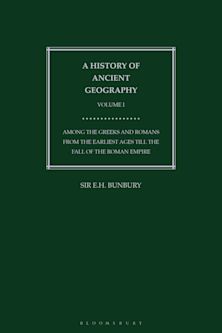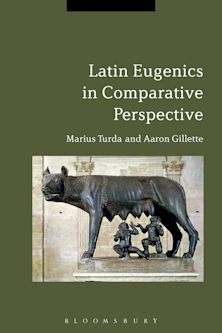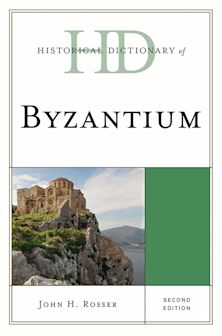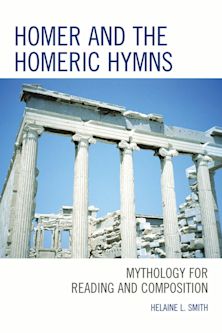- Home
- ACADEMIC
- Classical Studies
- Classical Studies - Other
- Theorizing Religions Past
Theorizing Religions Past
Archaeology, History, and Cognition
Harvey Whitehouse (Anthology Editor) , Luther H. Martin (Anthology Editor) , Harvey Whitehouse (Contributor) , Luther Martin (Contributor) , E Thomas Lawson (Contributor) , Stephen Mithen (Contributor) , Karen Johnson (Contributor) , Douglas L. Gragg (Contributor) , Roger Beck (Contributor) , Anita Leopold (Contributor) , Anne Clark (Contributor) , Theodore Vial (Contributor) , Ulrich Berner (Contributor) , Ilkka Pyysiäinen (Contributor) , Donald Weibe (Contributor)
Theorizing Religions Past
Archaeology, History, and Cognition
Harvey Whitehouse (Anthology Editor) , Luther H. Martin (Anthology Editor) , Harvey Whitehouse (Contributor) , Luther Martin (Contributor) , E Thomas Lawson (Contributor) , Stephen Mithen (Contributor) , Karen Johnson (Contributor) , Douglas L. Gragg (Contributor) , Roger Beck (Contributor) , Anita Leopold (Contributor) , Anne Clark (Contributor) , Theodore Vial (Contributor) , Ulrich Berner (Contributor) , Ilkka Pyysiäinen (Contributor) , Donald Weibe (Contributor)
You must sign in to add this item to your wishlist. Please sign in or create an account
Description
Historians bound by their singular stories and archaeologists bound by their material evidence donOt typically seek out broad comparative theories of religion. But recently Harvey WhitehouseOs Omodes of religiosityO theory has been attracting many scholars of past religions. Based upon universal features of human cognition, WhitehouseOs theory can provide useful comparisons across cultures and historical periods even when limited cultural data is present. In this groundbreaking volume scholars of cultures from prehistorical hunter-gatherers to 19th century Scandinavian Lutherans evaluate WhitehouseOs hypothesis that all religions tend toward either an imagistic or a doctrinal mode depending on how they are remembered and transmitted. Theorizing Religions Past provides valuable insights for all historians of religion and especially for those interested in a new cognitive method for studying the past.
Table of Contents
2 The Wedding of Psychology, Ethnography & History: Methodological Bigamy or Tripartite Free Love?
3 Toward a Scientific History of Religions
Part 4 The Archaeological Evidence
5 From Ohalo to Çatalhöyük: The Development of Religiosity During the Early Prehistory of Western Asia, 20,000-7,000 BC
6 No Need to Write this Down: Primary Emergence of the Doctrinal Mode in the Fifth and Fourth Millenia in Southwestern Iran
7 Graeco-Roman Antiquity
8 Old and New in Roman Religion: A Cognitive Account
9 Four Men, Two Sticks, and a Whip: Image and Doctrine in Mithraic Ritual
10 Syncretism and the Interaction of Modes of Religiosity: A Formative Perspective in "Gnostic Christian" Movements in Late Antiquity
11 Christian Traditions
12 Testing the Two Modes: Some Observations about Medieval Christianity
13 Modes of Religiosity and Changes in Popular Religious Practices at the Time of the Reformation
14 Modes of Religiosity and Types of Conversion in Medieval Europe and Modern Africa
15 Corrupt Doctrine and Doctrinal Revival: On the Nature and Limits of the Modes Theory
16 Critical Discussion
17 Critical Reflections on the "Modes of Religiosity" Argument
18 Theorizing Religions Past
Product details
| Published | Sep 15 2004 |
|---|---|
| Format | Ebook (PDF) |
| Edition | 1st |
| Extent | 1 |
| ISBN | 9798216217008 |
| Imprint | AltaMira Press |
| Series | Cognitive Science of Religion |
| Publisher | Bloomsbury Publishing |
About the contributors
Reviews
-
World famous authors examine the usefulness of Whitehouse's modes of religiosity theory against the backdrop of prehistorical, Graeco-Roman, and Christian religions. The result is an exhilarating panorama in the dynamics of history, cognition, and ritual.
Armin W. Geertz, University of Aarhus, Denmark; author of The Invention of Prophecy


































